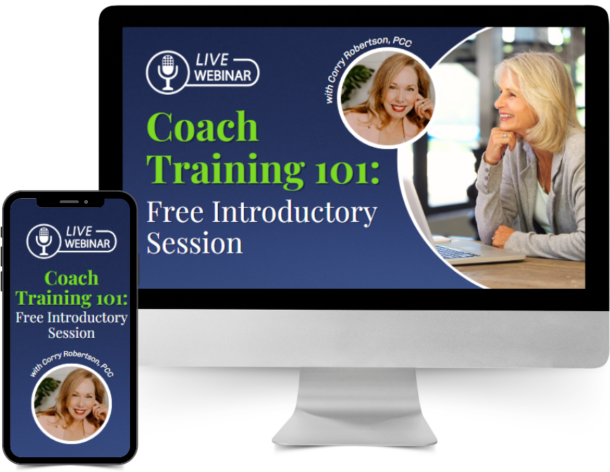Successful leadership development programs always begin with what I like to call a “purpose party” – a gathering of the most senior members of your leadership team to discuss purpose, vision and mission.
After all, leaders drive results. And I’ve spoken before about the 8 winning conditions that need to be in place for a successful program.
Selecting your participants is another crucial step – not all employees want to manage people.
But what does a successful leadership development program really look like once all the important preparation work is done?
Here’s a nuts and bolts look at all of the components that make up a program designed to get results and create ROI.
8 components of a successful leadership development program
1. Real world examples and practice
Learning is best transformed into action when it relates directly to the day-to-day challenges and goals of the participants. Participants that are given the opportunity to build their own professional development goals and use the program as a platform to achieve the results they are personally striving for have better outcomes.
2. Diverse learning systems
Effective programs strike the ideal balance between theoretical knowledge and practical application. Adult learners all learn differently, and a mix of video, audio, reading materials, live group training and 1-to-1 coaching sets up each individual for success.
3. Includes Benchmarks and Clear ROI Goals
If you’re an HR or OD professional, you’ll need an assess, measure and ROI strategy clearly developed before you request funding for your program. This will help you, the CSuite and your training provider assess success, make customized improvements and evolve the program over time. Successful programs can be tracked and proven. Some examples of the measurements to include might be:
- The number of participants you promote after the program compared to your goal
- Observable, measured improvement of the leadership competencies being taught in the program
- Observable practice of skills that will make them more effective in their current role
- Feedback from the participants’ colleagues on what they are observing such as a 360 multi-rater assessment
- The number of participants who recommend the program compared to your goal
4. Focuses on Coaching as a Leadership Style
Coaching is partnering with another person in a thought-provoking and creative process that inspires them to maximize their personal and professional potential, which is particularly important in today’s uncertain and complex environment.
Managers who are coaches see their employees as the experts in their work and believe they are creative, resourceful and whole. Leaders who learn how to use this process can help employees dramatically improve their results.
Genuine coaching skills are the secret to unlocking the potential of others, and almost all successful leadership development programs either include or are based on training leaders how to coach.
5. Includes a psychometric assessment
Self-awareness is key to a leader’s ability to influence, inspire and engage others.
Successful programs always start with a powerful psychometric assessment (AKA a personality test).
Leaders need to use communication and observation skills in a whole new way when managing in person, remotely or a blend of both so it’s crucial for everyone at a supervisory level and above to know themselves well and be able to identify key qualities in others.
With a Psychometric Assessment, leaders gain important insights into their own personalities and communication styles and they learn to speed read others.
6. Includes Microlearning Modules
Adult learners want to consume information in bite-sized chunks, and this learning style not only lends itself to easier implementation within a busy manager’s responsibilities, but also helps learners to retain information through repetition over time.
Microlearning modules that are future-focused and results oriented leverage the most impactful and effective approach to enhancing human development and performance.
7. Includes 1-to-1 Coaching in addition to group learning
Learning in a group is proven to help provide a sense of community and support for program outcomes. But successful leadership development programs also include private 1-to-1 coaching opportunities where participants experience first hand the benefits of coaching and can explore their own particular issues in depth.
8. Offers ICF Certified Coach Training
The International Coach Federation (ICF) is the gold standard in coach certification. A globally recognized certification in 138 countries around the world, the ICF is the largest regulatory body in the coaching industry.
Successful leadership development programs are led by professionally accredited coaches with a minimum of an ICF ACC (Associate Certified Coach), and offer an ICF certified ACSTH program (Accredited Coach Specific Training Hours Program).
Beginning Your Program – The Roll Out
So you have your components in place, and you’ve chosen your participants. It’s time to begin! A successful program launch has a festive vibe and is seen as a reward to be invited to attend. Participants should wholeheartedly opt-in.
The lead up should include:
- A company wide communication plan to inform all employees about the program
- The communication plan should explain the good that is expected to come of the program, not just for the participants but for the employees at large, the customers and the suppliers
Step 1 – Personal Assessments & Habit Tracking
Successful leadership programs begin with psychometric assessments to help developing leaders become self-aware.
DISC, Myers-Briggs, Hogan Personality Inventory – there are many kinds of psychometric assessments, each with their own pros and cons. At the Coaching Academy for Leaders we are licensed to use Lumina Spark, a world-leading provider of best-in-class, innovative psychometric assessments.
Lumina Spark for L&D reveals a participant’s whole personality, providing a unique portrait that increases self-awareness, reveals hidden potential and helps them cope better under pressure.
The assessment includes a 42-page colour PDF report and a personalized workbook. Each participant can take the assessment online at a convenient time and then receives a personal 1-to-1 coaching debrief to discuss the findings.
Following the assessments, participants are introduced to their own personal online habit trackers and learning goal portfolios.
Each participant receives a private ‘portfolio’ where they can design and develop their learning goals. Additionally, an online habit tracker helps them keep track of their behavioural changes as they go along.
When participants are held accountable to the program and expected to share their progress at regular portfolio presentations the results increase exponentially.
Step 2 – Diving Into The Learning Program
It’s been proven time and again that training spread out over a longer period of time compared to traditional approaches leads to an increased adoption and implementation rate, as well as improved ROI. Microlearning sessions interspersed with private coaching sessions create long-lasting performance improvement.
At the Coaching Academy for Leaders, our programs are spread out over 6 months and give the participants the time and space needed to integrate the new learning into their jobs and their psyches.
Custom programs are available, but a typical program might involve:
Weekly
Pre-recorded video content and reading material to review before each session
Online 90 minute, “LIVE” group learning labs for discussion and practice sets
Progress Tracking – Post session reflection for updating habit trackers and noting progress on personal training goals
Monthly
Online surveys to mark attendance and note learning highlights and challenges
Private 1-to-1 coaching between sessions for each participant
Graduation
The learning program concludes with a graduation and certificate presentation, which can include the sponsors, stakeholders and colleagues. Celebrating the achievements and success of the participants is an important step!
Evaluation
Measuring success and tracking goals is part of any successful leadership development program. Desired ROI can (and should) be different for every organization, and success is measured not only by individual participants’ success but also by the impact to division and organizational goals.
Reboot
Leadership Development programs that assess success on an ongoing basis, recalibrate the program to get even closer to the overarching goals and repeat on an ongoing basis are successful. When the program you create becomes part of the culture of the organization, and is constantly being improved over time, employee engagement and retention skyrocket.
The Leadership Training model is broken
Companies are spending enormous amounts on leadership training and education ($366 billion globally in 2018), but often the ROI does not justify the expense. Too often, leadership training programs, retreats and workshops don’t lead to the organizational culture change that is necessary to produce high-performance teams and accountable workforces.
40% of a company’s performance is negatively affected by a poor leader
$1M is the cost of poor leadership to a company with annual sales of $15M
77% of organizations report a leadership gap
67% of millennials are looking for a new job
Clearly, successful leadership development programs are needed now more than ever. Organizations, HR professionals, L&D consultants, OD specialists and CXO’s need to assess the programs they are putting in place and make sure they are aligned, proven, and will drive results.
It’s time to build your employees to be resilient and agile in times of change. Let’s talk about setting up YOUR successful leadership development program. Get in touch here www.talkwithcorry.com






0 Comments